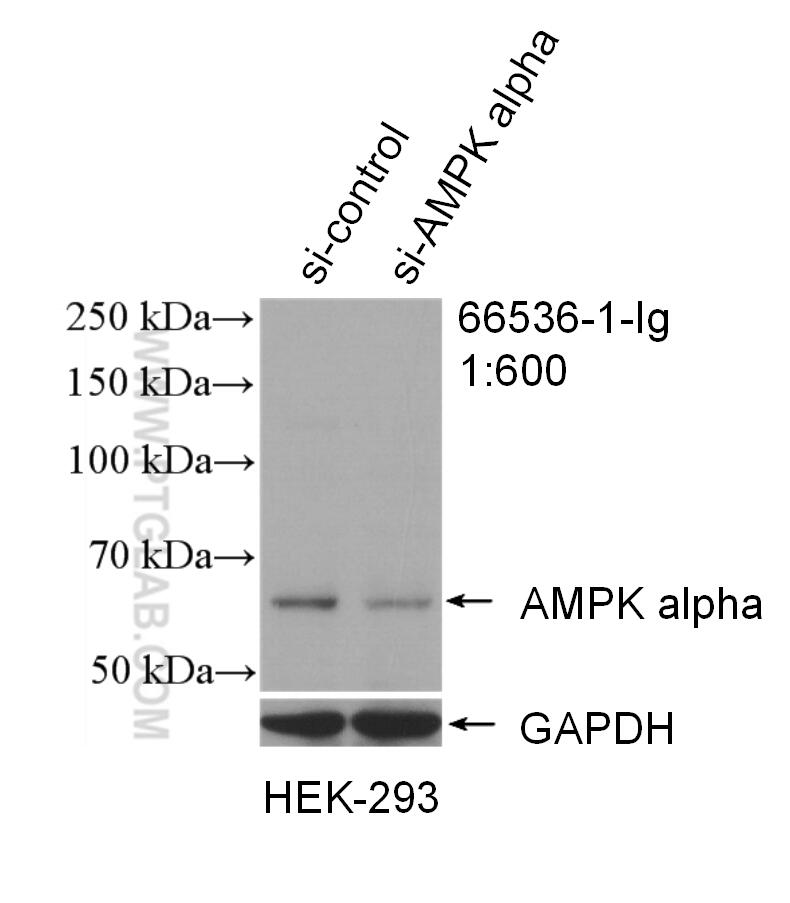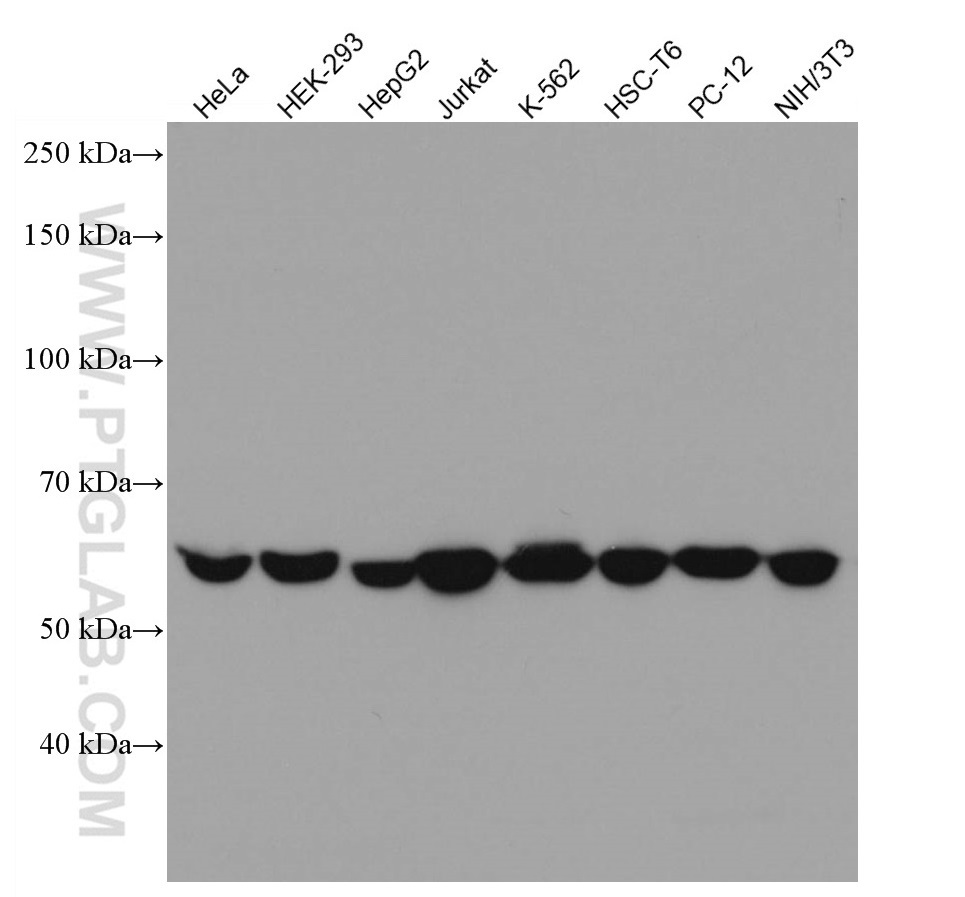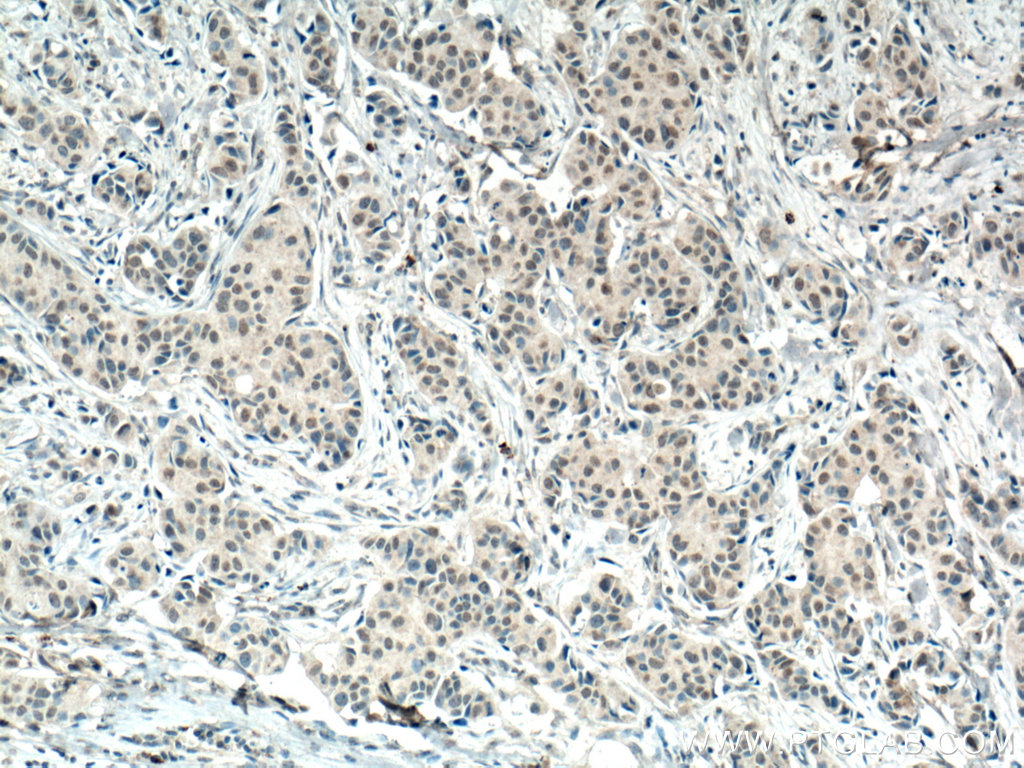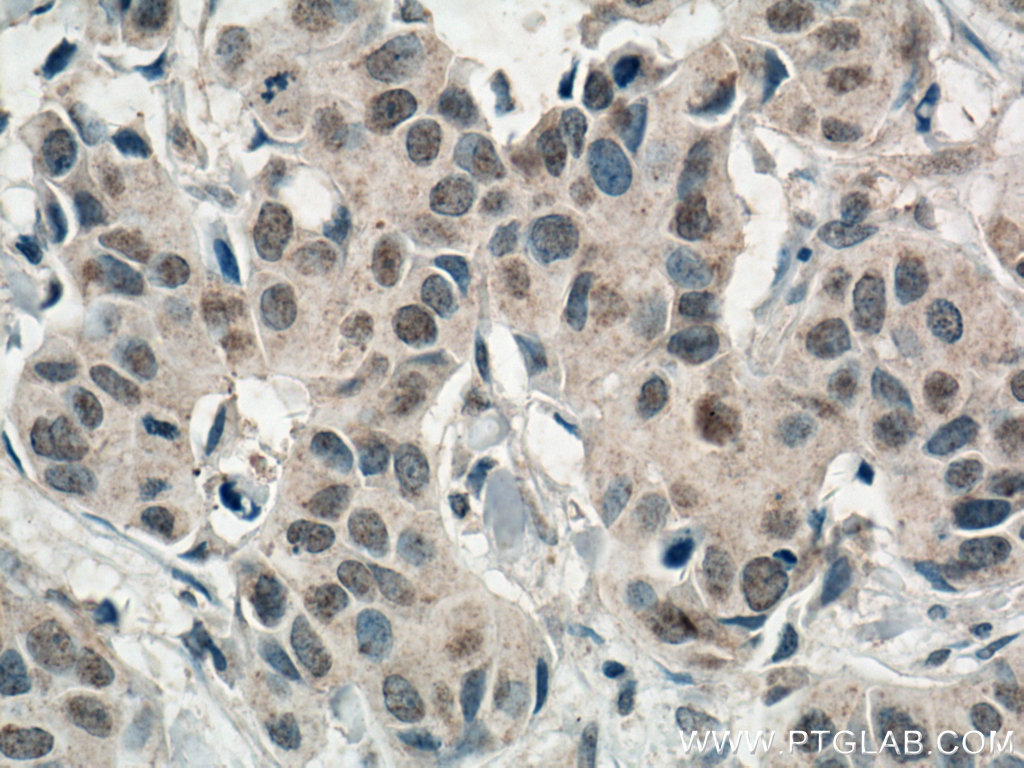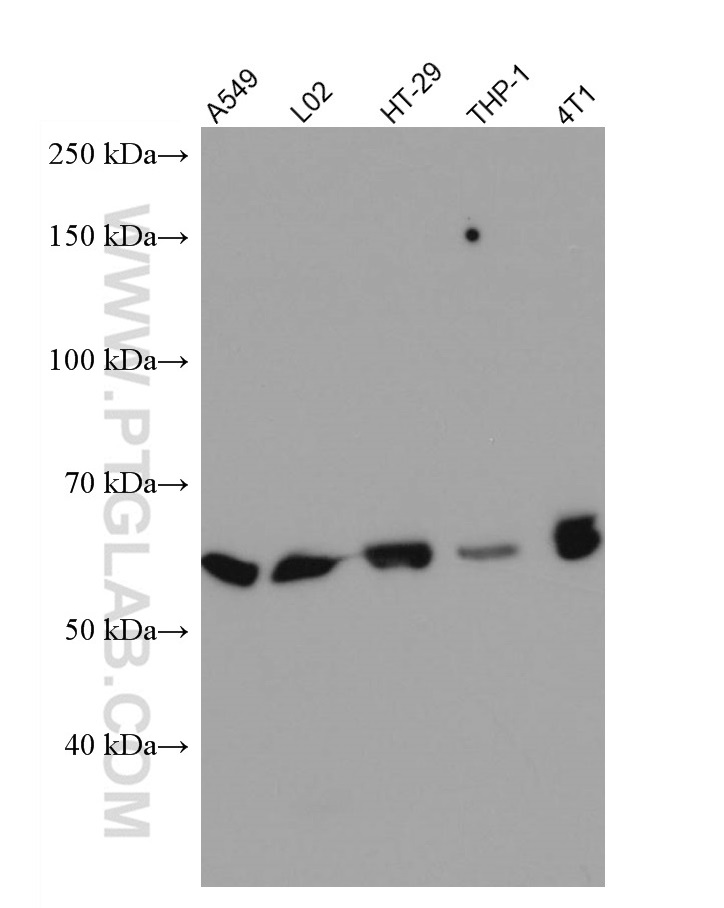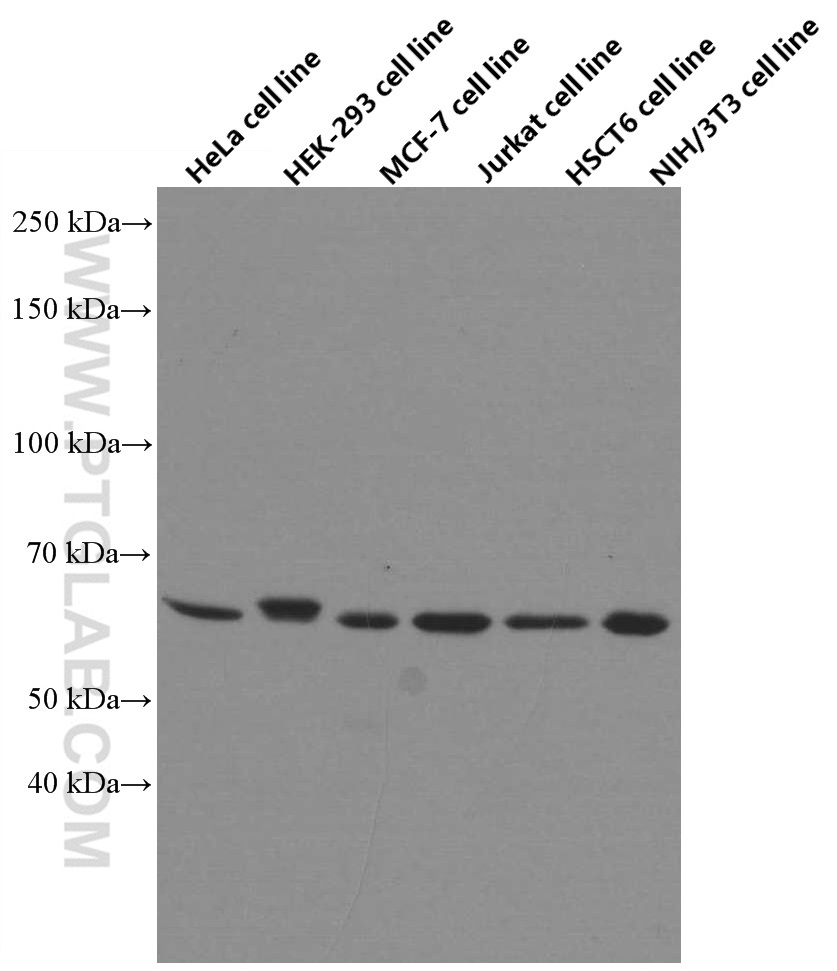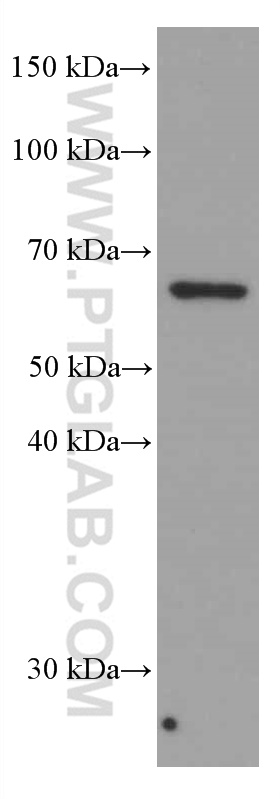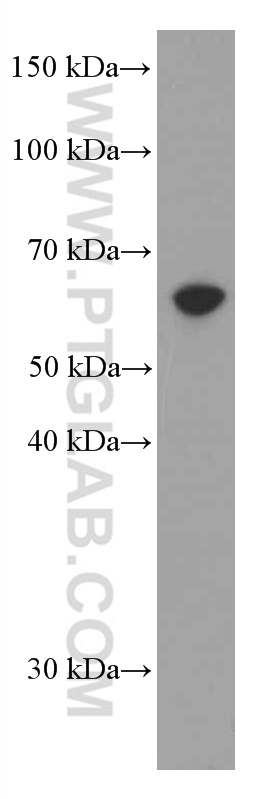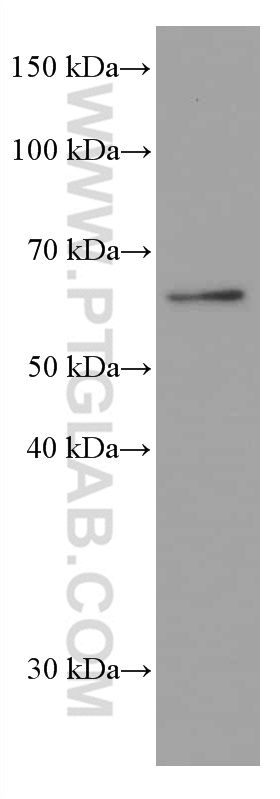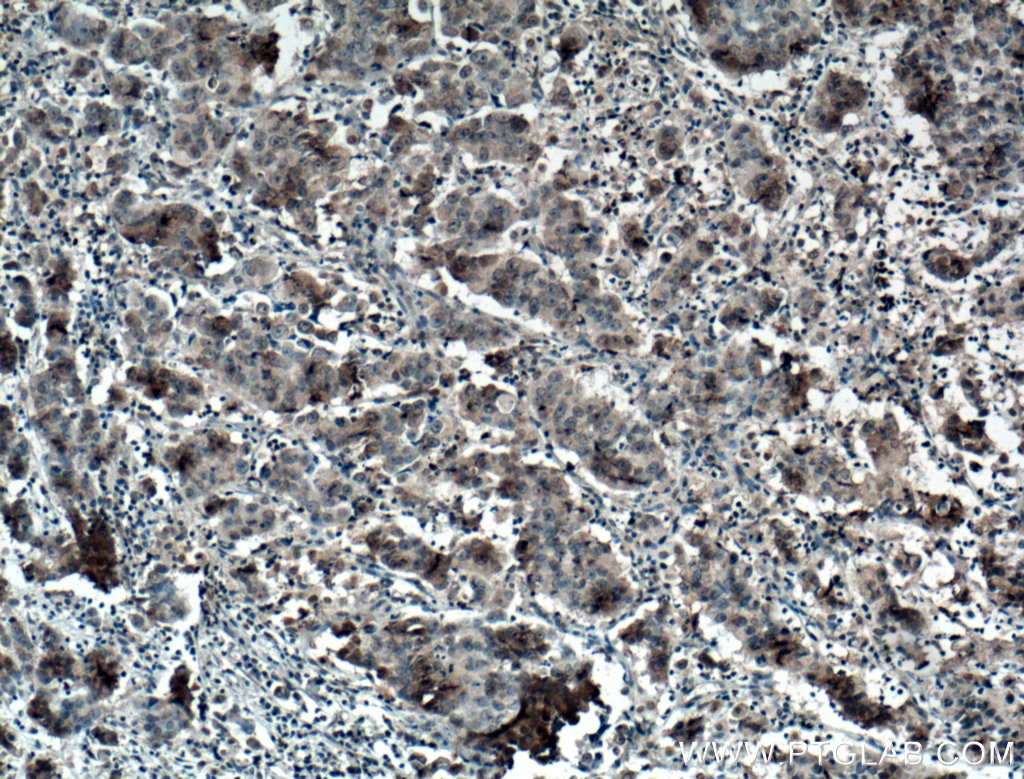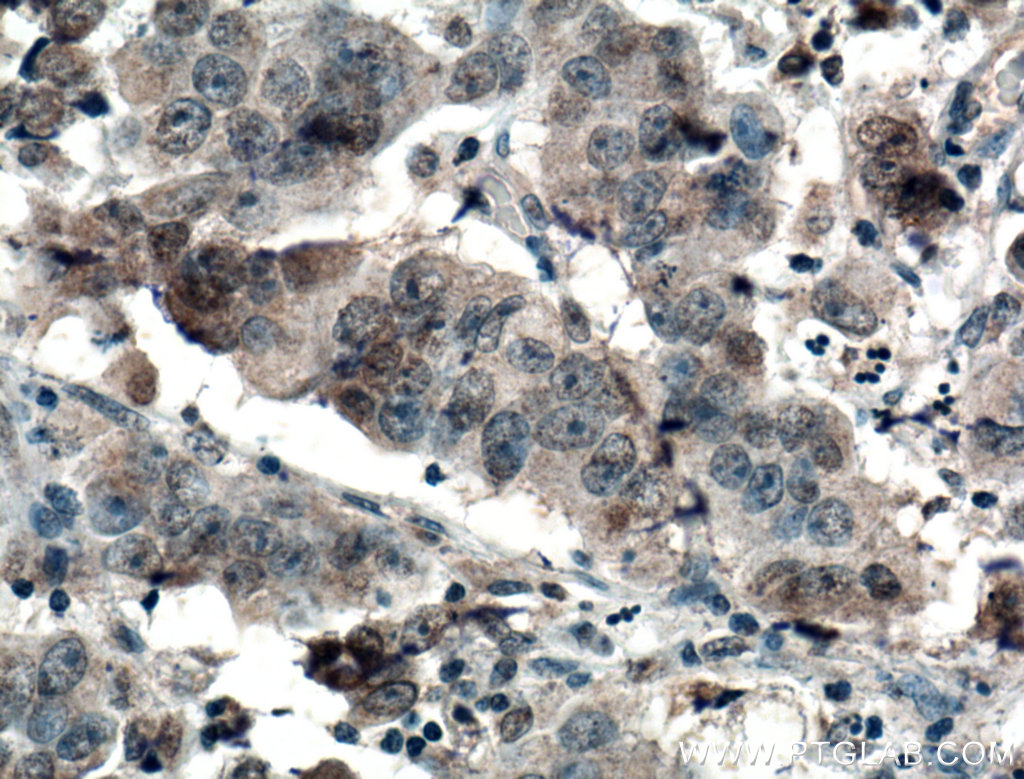验证数据展示
经过测试的应用
| Positive WB detected in | HeLa cells, Jurkat cells, HSC-T6 cells, NIH/3T3 cells, HEK-293 cells, A549 cells, HepG2 cells, K-562 cells, PC-12 cells, L02 cells, HT-29 cells, THP-1 cells, 4T1 cells, MCF-7 cells |
| Positive IHC detected in | human breast cancer tissue, human prostate cancer tissue Note: suggested antigen retrieval with TE buffer pH 9.0; (*) Alternatively, antigen retrieval may be performed with citrate buffer pH 6.0 |
推荐稀释比
| Application | Dilution |
|---|---|
| Western Blot (WB) | WB : 1:500-1:3000 |
| Immunohistochemistry (IHC) | IHC : 1:50-1:500 |
| It is recommended that this reagent should be titrated in each testing system to obtain optimal results. | |
| Sample-dependent, Check data in validation data gallery. | |
产品信息
66536-1-Ig targets AMPK Alpha 1 in WB, IHC, CoIP, ELISA applications and shows reactivity with Human, Rat, Mouse samples.
| Tested Applications | WB, IHC, ELISA Application Description |
| Cited Applications | WB, IHC, CoIP |
| Tested Reactivity | Human, Rat, Mouse |
| Cited Reactivity | human, mouse, rat, pig, hamster, goat |
| Immunogen | AMPK Alpha 1 fusion protein Ag24744 种属同源性预测 |
| Host / Isotype | Mouse / IgG1 |
| Class | Monoclonal |
| Type | Antibody |
| Full Name | protein kinase, AMP-activated, alpha 1 catalytic subunit |
| Synonyms | AMPK, AMPK alpha, AMPK Alpha 1, AMPK subunit alpha 1, AMPK1, AMPKa1, PRKAA1 |
| Calculated Molecular Weight | 63 kDa |
| Observed Molecular Weight | 64 kDa |
| GenBank Accession Number | BC012622 |
| Gene Symbol | AMPK Alpha 1 |
| Gene ID (NCBI) | 5562 |
| RRID | AB_2881899 |
| Conjugate | Unconjugated |
| Form | Liquid |
| Purification Method | Protein A purification |
| UNIPROT ID | Q13131 |
| Storage Buffer | PBS with 0.02% sodium azide and 50% glycerol pH 7.3. |
| Storage Conditions | Store at -20°C. Stable for one year after shipment. Aliquoting is unnecessary for -20oC storage. |
背景介绍
The mammalian 5-prime-AMP-activated protein kinase (AMPK) appears to play a role in protecting cells from stresses that cause ATP depletion by switching off ATP-consuming biosynthetic pathways. PRKAA1 is also named as AMPK1, ACACA kinase, HMGCR kinase. It is a mammalian homologue of sucrose non-fermenting protein kinase (SNF-1), which belongs to a serine/threonine protein kinase family. It has 2 isoforms with molecular mass of 63-66 kDa produced by alternative splicing.
实验方案
| Product Specific Protocols | |
|---|---|
| WB protocol for AMPK Alpha 1 antibody 66536-1-Ig | Download protocol |
| IHC protocol for AMPK Alpha 1 antibody 66536-1-Ig | Download protocol |
| Standard Protocols | |
|---|---|
| Click here to view our Standard Protocols |
发表文章
| Species | Application | Title |
|---|---|---|
EMBO J Rab2A-mediated Golgi-lipid droplet interactions support very-low-density lipoprotein secretion in hepatocytes | ||
Redox Biol Adiponectin/AdiopR1 signaling prevents mitochondrial dysfunction and oxidative injury after traumatic brain injury in a SIRT3 dependent manner. | ||
Biomed Pharmacother Berberine is a potential alternative for metformin with good regulatory effect on lipids in treating metabolic diseases | ||
J Nanobiotechnology Regulating the immunosuppressive tumor microenvironment to enhance breast cancer immunotherapy using pH-responsive hybrid membrane-coated nanoparticles. | ||
J Nanobiotechnology Graphene oxide exacerbates dextran sodium sulfate-induced colitis via ROS/AMPK/p53 signaling to mediate apoptosis. | ||
Food Chem Selective transportation and energy homeostasis regulation of dietary advanced glycation end-products in human intestinal Caco-2 cells. |
